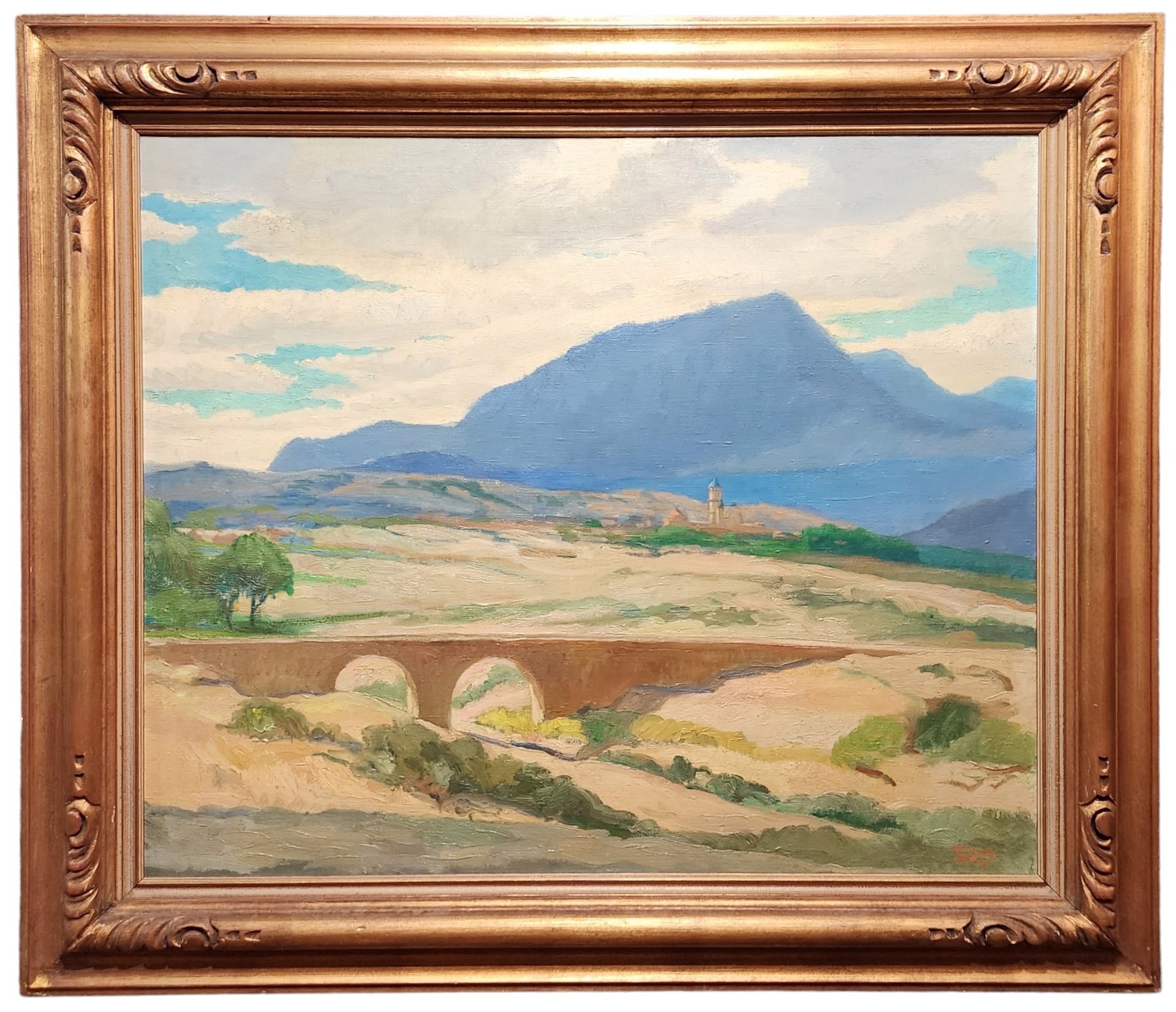Auqaduct e Saltillo, c. 1930s by Charles McLaughlin
Auqaduct e Saltillo, c. 1930s by Charles McLaughlin
Charles J. McLaughlin (American, 1888 - 1964)
Signed: CJM (Lower, Right)
" Auqaduct e Saltillo ", c. 1930s
(Titled on Verso)
Oil on Canvas
23 1/2" x 28"
Housed in a 3 1/2" Frame
Overall Size: 30" x 35"
In overall very good condition.
Charles Jasper McLaughlin was a renowned artist born in Covington, Kentucky in 1890 and passed away in 1964. His works were extensively displayed in prestigious galleries in Cincinnati, Philadelphia, and New York City during the 1930s through the late 1940s. Despite being recognized as "one of metropolitan Cincinnati's greatest painters" by The Enquirer in his obituary, history has forgotten the work of this talented artist.
McLaughlin attended Holmes High School in Covington, Kentucky. In 1905, he studied at the Cincinnati Art Academy under Frank Duveneck. Later, he traveled to France to study fresco painting. There, he received guidance from Paul Boudoin and Robert LeMontaigne-St. Hubert at the Sorbonne in Paris. Additionally, he studied landscape painting under Andre Strauss and Raymond Balland (dates unknown).
McLaughlin was a man with diverse interests and talents. For instance, he spent two summers in Fontainebleau, France, studying architecture. Later in 1916, he designed his own home in Covington, called "The Riverside House." Additionally, he designed the interior of Trinity Episcopal Church in Covington. From 1913 to 1920, he worked as a decorator at Rookwood. At some point, the dates of which are unknown, he also worked for the Kentucky Post.
During the early 1920s, McLaughlin worked as an architect at the Ferro Concrete Company located in Cincinnati. Later, from 1927 to 1929, he taught architecture at the Texas A. and M College. In the early 1930s, McLaughlin returned to Cincinnati to study painting at the Cincinnati Art Academy.
McLaughlin traveled to France, Italy, Corsica, Greece, and Mexico. However, among all these places, Mexico seemed to be his favorite as he owned a "picturesque place" in Saltillo. His love for the country shows in his work, particularly in Mesa and Mountains (date unknown) and Satillo's Matterhorn (date unknown), which feature his studio.





